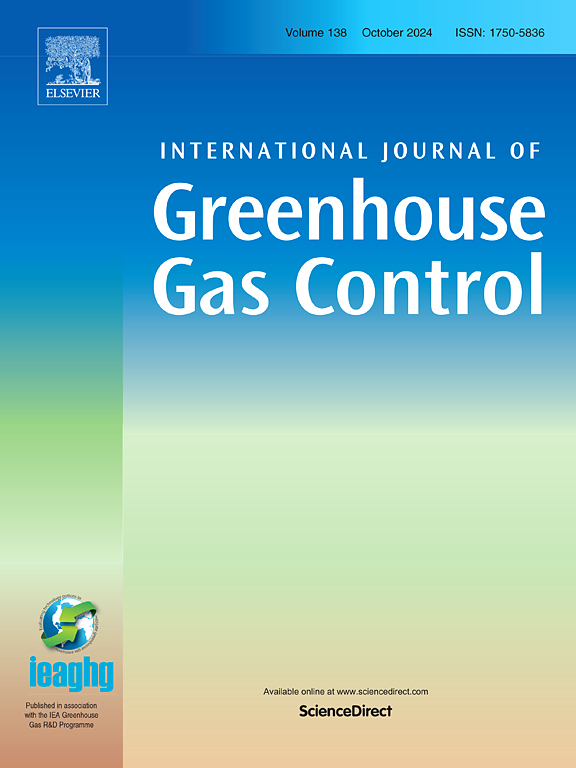Deep learning assisted monitoring framework for geological carbon sequestration
IF 5.2
3区 工程技术
Q2 ENERGY & FUELS
International Journal of Greenhouse Gas Control
Pub Date : 2025-04-30
DOI:10.1016/j.ijggc.2025.104372
引用次数: 0
Abstract
Geological Carbon Sequestration (GCS) is expected to play a vital role in mitigating the harmful effects of climate change. However, the environmental risks associated with plume migration, caprock fractures, induced seismicity, and fatal reactivation motivate the development of a high-resolution monitoring framework capable of predicting reservoir pressure build-up and plume location in real-time. This study presents a Deep Learning (DL)-based monitoring framework that predicts reservoir pressure build-up and plume location from sparse geophysical measurements during GCS injection operations. The proposed surrogate model consists of an Encoder–Decoder Artificial Neural Network (ANN) that inverts sparse surface uplift and injection pressure measurements to predict the pressure build-up field. A Long Short-Term Memory (LSTM)-based surrogate model is developed to capture the spatio-temporal evolution of the saturation field, using the predicted pressure build-up history and injection schedules. The synthetic dataset used is parameterized by variations in permeability, porosity, and dynamic injection schedules. An ensembled eXplainable Artificial Intelligence (XAI) feature attribution approach is used to identify the most effective surface uplift sensor locations. The performance of the multi-network monitoring surrogate model is studied in the form of a case study involving the injection of into a single wellbore. The accuracy of the proposed surrogate model demonstrates its potential for real-time monitoring of GCS processes.
深度学习辅助地质固碳监测框架
地质碳封存(GCS)有望在减轻气候变化的有害影响方面发挥重要作用。然而,与CO2羽流迁移、盖层裂缝、诱发地震活动和致命再激活相关的环境风险促使了高分辨率监测框架的发展,该框架能够实时预测储层压力累积和CO2羽流位置。该研究提出了一个基于深度学习(DL)的监测框架,该框架可以通过GCS注入作业期间的稀疏地球物理测量来预测油藏压力累积和二氧化碳羽流位置。所提出的代理模型由一个编码器-解码器人工神经网络(ANN)组成,该模型可以反演稀疏的地表隆起和注入压力测量数据,以预测压力积聚场。利用预测的压力积累历史和二氧化碳注入时间表,开发了一个基于长短期记忆(LSTM)的替代模型来捕捉二氧化碳饱和度场的时空演变。所使用的合成数据集是由渗透率、孔隙度和动态CO2注入计划的变化参数化的。采用一种集成的可解释人工智能(XAI)特征归因方法来识别最有效的地表隆起传感器位置。以单井注入二氧化碳为例,对多网络监测替代模型的性能进行了研究。所提出的代理模型的准确性证明了它对GCS过程进行实时监测的潜力。
本文章由计算机程序翻译,如有差异,请以英文原文为准。
求助全文
约1分钟内获得全文
求助全文
来源期刊
CiteScore
9.20
自引率
10.30%
发文量
199
审稿时长
4.8 months
期刊介绍:
The International Journal of Greenhouse Gas Control is a peer reviewed journal focusing on scientific and engineering developments in greenhouse gas control through capture and storage at large stationary emitters in the power sector and in other major resource, manufacturing and production industries. The Journal covers all greenhouse gas emissions within the power and industrial sectors, and comprises both technical and non-technical related literature in one volume. Original research, review and comments papers are included.

 求助内容:
求助内容: 应助结果提醒方式:
应助结果提醒方式:


